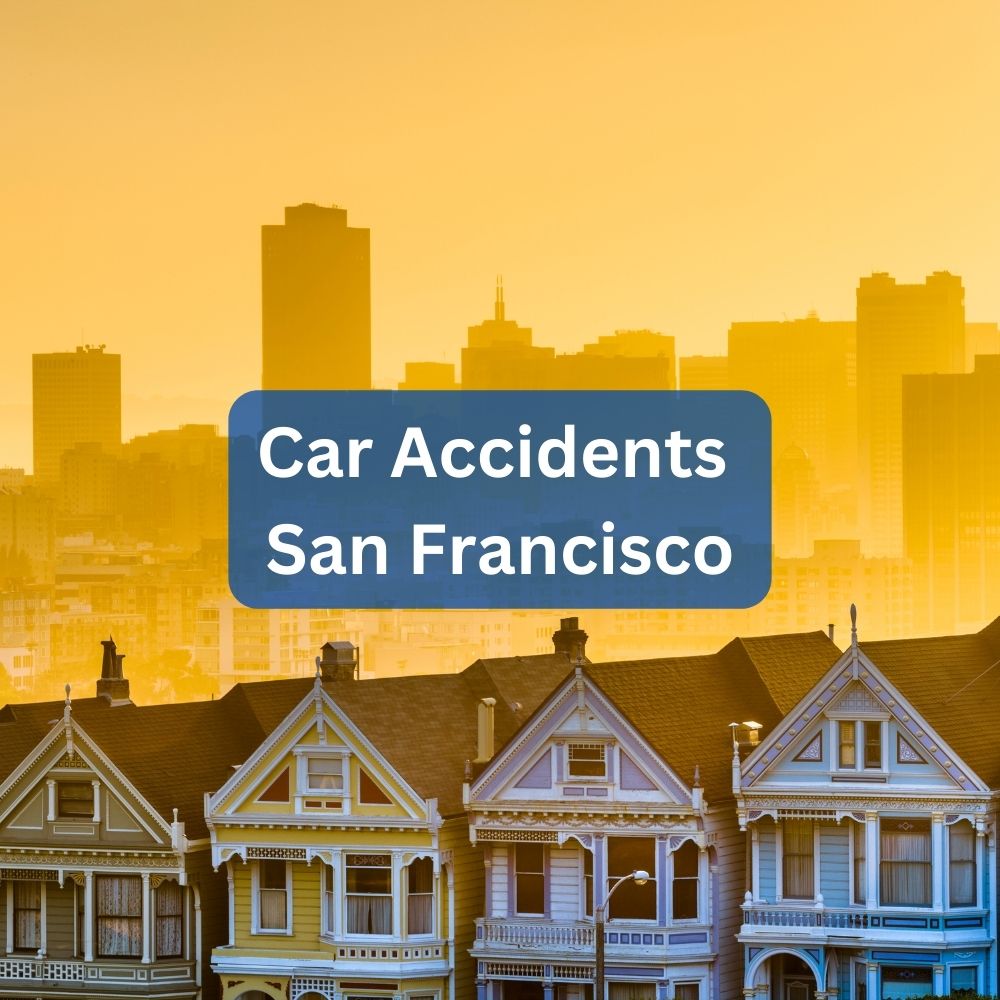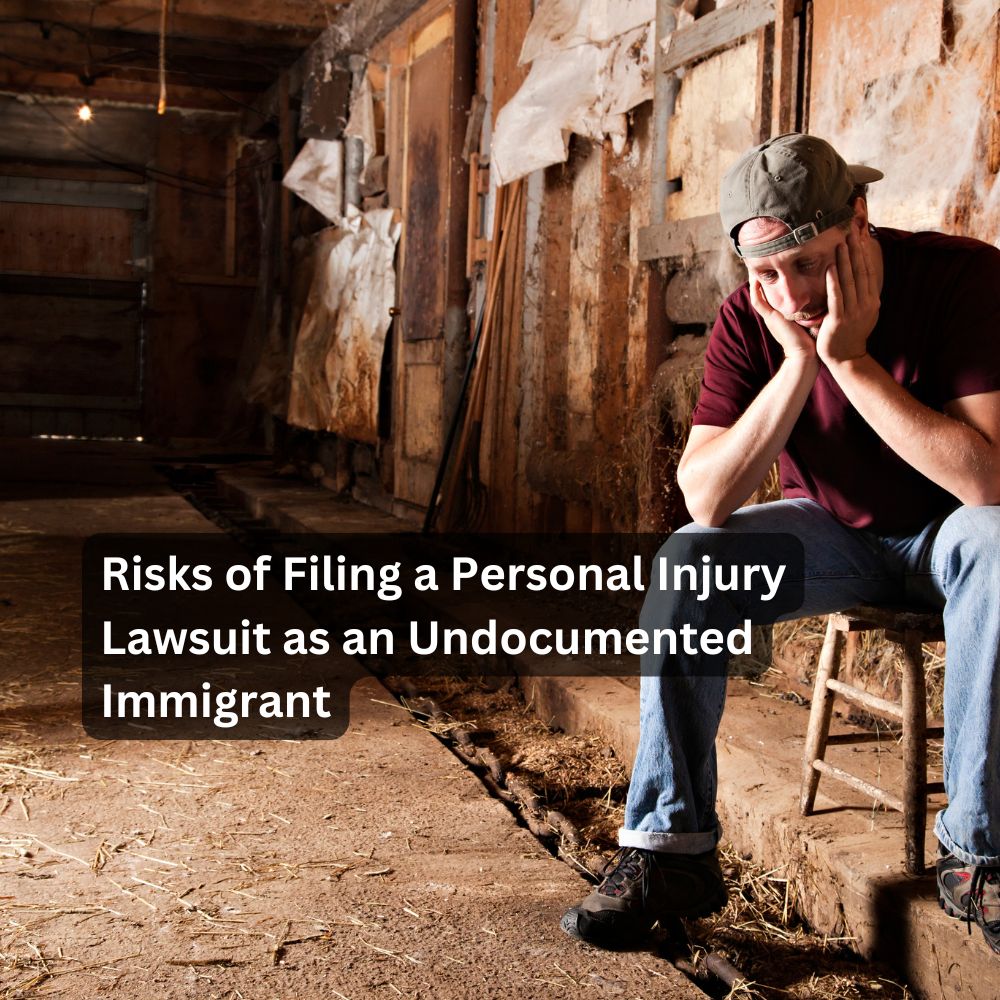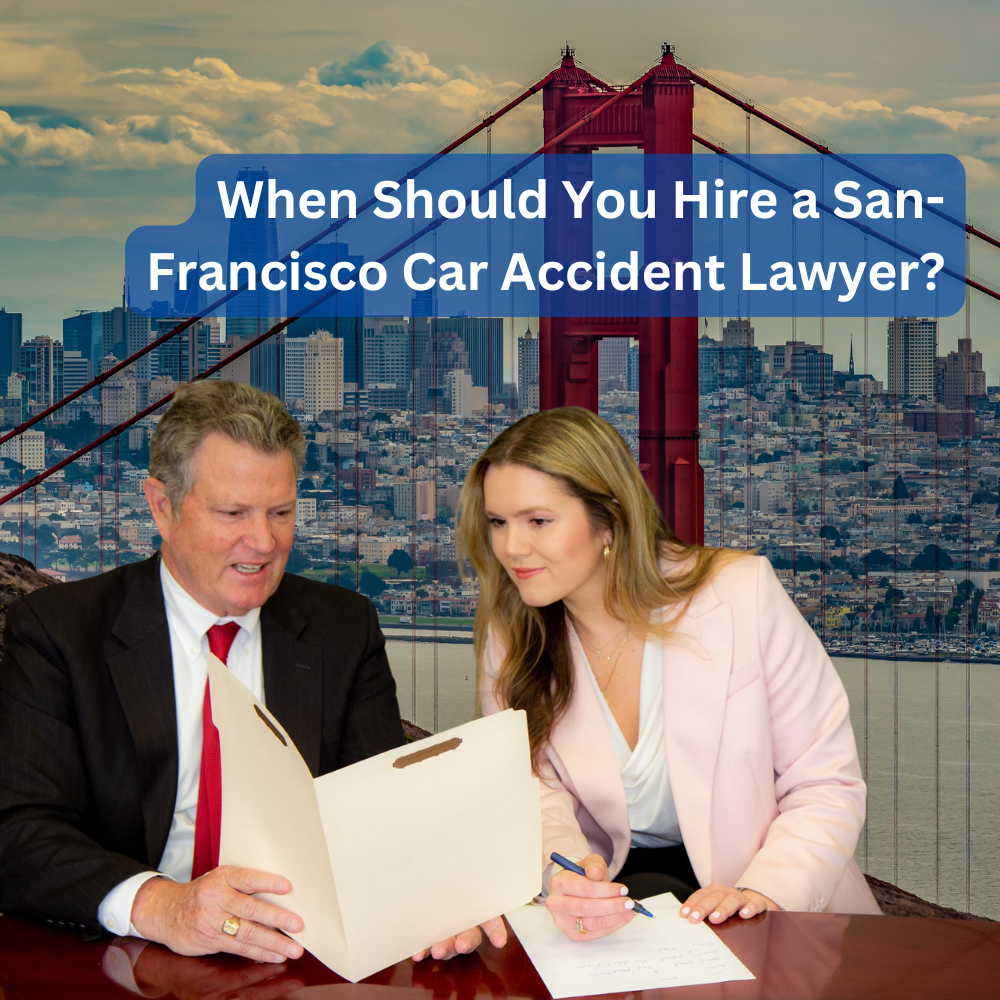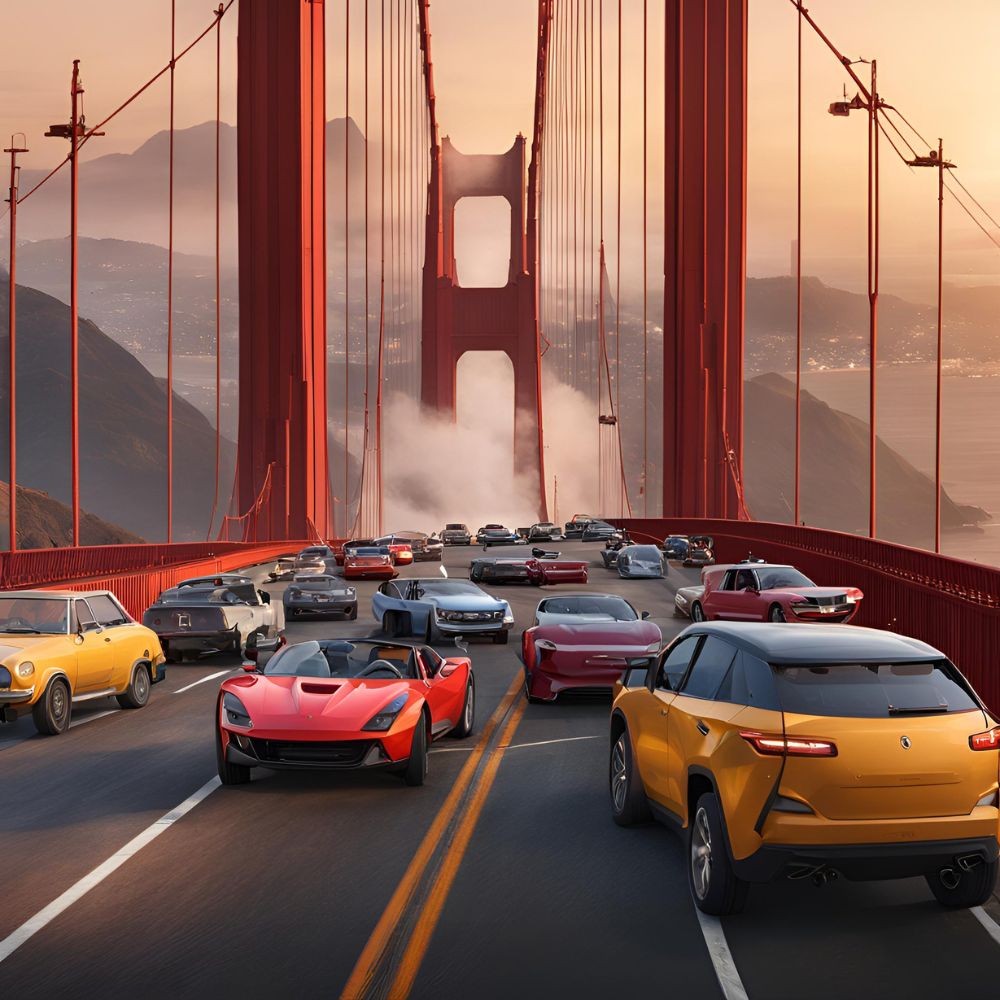Get Experienced Legal Guidance in San Francisco
We work to protect your financial interests. At the end of each case, we want all of our clients to be happy with the representation they received and satisfied with the settlement they accept. If the responsible insurance company will not make a reasonable offer, we have the resources, skill, and experience to file a lawsuit on your behalf and litigate your claim, and if we still cannot settle your case, we will take it to trial. At The Abel Firm our car accident lawyers have helped many people like you recover the money you have lost, as well as compensation for what you have gone through.
Common Types of Car Accidents in San Francisco
A motor vehicle collision can happen in a number of ways and as a result of a wide range of behaviors and situations. This can include defective auto parts, dangerous roadway design, or road and weather conditions. However, human factors such as driver error or inattention are the cause of most car accidents in San Francisco and throughout the United States. According to the California Office of Traffic Safety, these are the most common human causes of collisions in the city of San Francisco:
- Inattention
- Carelessness
- Drunk driving
- Speeding
- Cell phone/other device use
- Talking to passengers
- Eating/drinking while driving
- Drowsy driving
- Disobeying roadway rules
These behaviors or choices can lead to all manner of collisions and drivers of both passenger and commercial vehicles can make them. Common types of accidents include:
- Car v. motorcycle accidents
- Uber, Lyft and Taxi accidents
- Accidents involving semi-trucks
- Delivery truck accidents involving Fed Ex, UPS and Amazon delivery services
- Rear-end collisions
- Left-turn collisions
- Head-on collisions
- Bicycle v. car accidents
- Accidents caused by uninsured/underinsured motorists
- Accidents caused by defective roadway design
- Accidents caused by automobile brake, steering, and other defects
Unfortunately, vulnerable road users like pedestrians, bicyclists, and motorcyclists become involved in hundreds of car accidents every year in the Bay Area. The odds of catastrophic and fatal injuries are higher in victims of these crashes. Even a low-speed rear-end collision can launch a motorcyclist from his/her bike or catastrophically injure a pedestrian. It is every driver’s duty to pay attention to the road and follow local laws to prevent collisions.
Common Injuries in Car Accidents
Car accidents are unique in that they can cause injury to virtually any part of the body. The terrible reality of car accidents is that three separate collisions occur in each one. The first collision is when the vehicle strikes another object. In this collision, the vehicle absorbs kinetic energy and helps to somewhat protect the people within the car. The second is the human collision, in which the passengers inside the vehicle strike an outside force (i.e. the steering column, seatbelt, or airbag) and stop the movement they had before the accident. In human collisions, injuries such as broken bones, fractures, and lacerations can occur.
In the third collision, the internal collision, the body’s organs move toward the point of impact until encounter other elements within the body, such as other organs or bones. The exterior body may appear unharmed, but organs such as the brain, heart, and lungs may have sustained an injury in the third impact. This is how many traumatic brain injuries occur, in which the brain strikes the inside of the skull and begins to bleed or swell. Here’s an overview of the most common car accident injuries:
- Head and brain injuries. Skull fractures in human collisions may not cause brain damage, but injuries such as concussions, blunt force trauma, and penetration injuries can affect the brain. Hematomas (bleeding in the brain) and swelling can occur, leading to temporary or permanent brain damage.
- Back injuries. The fragile spinal cord can sustain major damage in an accident, leading to lifelong back pain or even paralysis. If the spinal cord suffers an incomplete injury, the victim could experience a partial loss of movement and feeling. A complete spinal cord injury can leave a victim paralyzed below the level of the injury.
- Neck injuries. Whiplash is one of the most common neck injuries in rear-end collisions. Whiplash occurs when an accident causes the neck’s muscles, nerves, tendons, and discs to bend forcibly forward and backward. Fractures of the top two spinal cord vertebrae, C1 and C2, can lead to the most severe type of spinal cord injury, wherein the victim suffers full paralysis. These fractures are often fatal.
- Chest injuries. In a major impact to the chest, a car accident victim can sustain broken ribs and a condition known as flail chest. This is a life-threatening injury in which a portion of the rib cage breaks off and separates from the rest of the chest wall. Victims can also suffer traumatic cardiac arrest in an accident or collapsed lungs.
Other common car accident injuries include broken bones and ligament damage. These injuries can lead to temporary disability and missed time at work, as well as some lifelong effects. Torn ligaments or slipped discs can cause chronic pain and may require surgery to alleviate symptoms. Many car accident injuries are fatal, resulting in wrongful death. If a loved one passed away in a car accident, consult with one of our attorneys. Our San Francisco car accident lawyer cares about each of our clients and wants to help you pursue justice for a life cut short.
Legal Responsibility in San Francisco Car Accident Cases
California uses an at-fault system for insurance claims. This means that if a driver is found to be at fault for a collision, they are responsible for compensating the other party or parties for their losses (in most cases, this comes through an insurance policy). In motor vehicle collision cases, legal responsibility typically hinges on the concept of negligence. Drivers owe other motorists and passengers a duty of care to take operate their vehicles in a reasonable manner that keeps them safe.
How do you know if another driver was negligent? An attorney can help investigate the accident to determine if another party was negligent. For negligence to be established, typically four elements must be proven. One, that the other driver owed you a duty of care. Two, that their actions breached that duty. Three, that the breach of duty caused or contributed to the accident. Three, that you suffered actual damages or injury as a result. Examples of behaviors that may meet these criteria are speeding, drunk driving, failure to obey road markings, signs or signals, but also general inattention or distraction.
Proving fault and liability is something that should always be put in the hands of a skilled attorney. Your attorney can use eyewitness accounts of the crash, video surveillance footage, photographs of the accident scene, type of damage to vehicles, and other means to collect evidence against an at-fault party. A team of experienced attorneys makes the investigation and discovery phases of a claim much easier on accident victims. Don’t attempt to navigate a complex car accident claim alone. Protect your rights by retaining an attorney with experience and knowledge.
Can I Recover Compensation If I was Partly at Fault?
Yes. California uses a pure comparative fault system. This means that you can recover compensation from another at-fault party, regardless of the degree of your own fault. However, any compensation you recover will be reduced but your percentage of fault. This can certainly come into play during settlement negotiations and is especially important should your case go to trial.
What Type of Compensation Can I Recover After My Car Accident?
If a car accident personal injury claim is successful, the courts will award a settlement or judgment amount to the plaintiff (the victim of the car accident). Typically, the defendant’s insurance company will pay this settlement or the defendant him/herself if the defendant has the means to do so. Compensation amounts and types will vary on a case-by-case basis but can generally include monetary recovery for:
- Medical bills, including ambulatory fees, hospital stays, scans and X-rays, surgeries and procedures, and prescription medications. These costs can also include medical equipment such as wheelchairs, home or vehicle modifications for a permanent disability, and live-in care.
- Property damage. The courts can make the defendant pay for damage to your vehicle or other properties, including items in your vehicle that sustained damage in an accident. This can include expensive guitars, radios, or anything else within your vehicle, as well as the vehicle itself.
- Lost wages. If you had to miss work because of your injuries, you can list these damages in your lawsuit. Include lost wages, a lost capacity to earn (due to a disability), and lost workplace opportunities, such as raises or promotions.
- Non-economic Damages. Non-economic damages in a car accident case can include physical pain, emotional suffering, mental anguish, and lost quality of life. In cases involving permanent disability such as paralysis, the courts will grant higher awards.
There is no damage cap on car accident compensation in California. In very rare cases, it is possible to receive punitive damages in a car accident case involving the defendant’s gross or reckless negligence. Punitive damages punish the defendant for particularly irresponsible actions or intentional acts. To get an estimate of the exact compensation amounts in your case, talk to a lawyer.
How Much Is My San Francisco Car Accident Case Worth?
The answer to the question, unfortunately, is that it depends. No attorney can accurately estimate how much your case will be worth to any degree of accuracy without a full understanding of all the factors involved. These include:
- The extent of your injuries and the amount of your medical costs.
- The impact the injury has on your life, ability to earn income, and relationships.
- If the injury caused partial or total disability or left permanent scarring or disfigurement
- If you will need long term rehabilitation or in-home care
- The amount of insurance coverage available from the defendant or defendants.
- and many other factors
Without clear answers to these and other questions, you simply cannot know how much you are entitled to in a car accident lawsuit. That is why it is important to seek help from our San Francisco car accident lawyer.
Important Information About Your Car Accident Settlement
- What are car accident settlements based on? The courts base car accident settlement amounts on your actual damages (economic damages), including the number of your medical bills and lost wages. To measure your non-economic damages, the California courts will examine the amount of pain and suffering the victim incurred, taking into account pain, disfigurement, disability and emotional suffering. There is no exact rule that decides how much non-economic compensation a car accident victim recovers.
- How are they paid? When a plaintiff receives a settlement offer or judgment award, the defendant’s insurance company will typically mail a check in a matter of weeks after the final court decision. However, depending upon the extent of your injuries and the insurer’s willingness to offer a fair settlement, this process can take months or longer.
- Are car accident settlements taxable? In state court, car accident settlements are non-taxable. You would not include settlement proceeds in your yearly income. However, the Internal Revenue Service (IRS) does have exceptions to this rule. Certain types of compensation are taxable, including most punitive damages. Talk to your attorney about the tax on your specific awards.
What Is the Statute of Limitations for Car Accident Claims in California?
The statute of limitations is the deadline by which an accident victim must file a claim with the civil courts. After this deadline, the courts can refuse to hear your case. According to California Code of Civil Procedure section 335.1, in California, you have two years from the date of injury or the date of discovery of injury to file a personal injury claim. You have three years to file property damage claims. However, there are certain circumstances that may lengthen or shorten this window. For instance, if you are filing a claim against a government agency, you must do so within six months of the incident.
While this may seem like a long time, it is important to speak to an attorney as soon as possible. It can take months, or longer in the case of significant injury, to fully understand the extent of your injuries and resultant medical costs.
San Francisco is one of just a handful of cities in America with arterial thoroughfares instead of multiple highways. Arterial thoroughfares are high-capacity urban roads, necessary in San Francisco due to the city’s unique geography. There are only a few main arterials in the city that the majority of road traffic must traverse. This leads to heavy traffic and congestion. According to mobility data of the San Francisco-Oakland area, there is an average of 6.6 hours of “congested time” on the roadways, resulting in total delays per peak auto commuter of 78 hours annually (per person).
The busiest roads and bridges in the city include:
- Van Ness Avenue. This arterial road goes through the heart of the city, toward the Golden Gate Bridge.
- 19th Avenue. Extends from I-280 on the way to the Golden Gate Bridge and travels north and south on the edge of the downtown business district (also called California State Route 1).
- Fell Street, Fulton Street, and Lincoln Way. All run along Golden Gate Park, traversing the western part of the city in an east and south direction.
Other major roads include California Street, Geary Boulevard, Grant Avenue, Market Street, 19th Avenue, the Great Highway and Park Presidio Boulevard. Traversing any of these arterial roads poses threats to drivers and bicyclists, due to heavy traffic volume. Collisions in bumper-to-bumper traffic can cause injuries such as whiplash or more serious harms to pedestrians, bicyclists, and motorcyclists. The Central Freeway, Bayshore Freeway, and the Highway 280 Extension are three other areas with high traffic and increased risk of car accidents.
What to Do After a Car Accident in San Francisco?
After a car accident, remain calm and call the police. Report your accident to authorities even if it is minor, so there will be official documentation. Gather as much information about your accident as possible, including the other driver’s name and contact information. Take photographs of the scene of the accident if you can, as well as any property damage or personal injuries. Keep documents such as the police report and medical statements regarding your injuries.
Once you have reported the accident to your insurance company, your next phone call should be to The Abel Firm. Our attorneys have decades of collective experience in car accident law in California and around the country. We have the education, resources, and firsthand experience to maximize your odds of taking home compensation.





